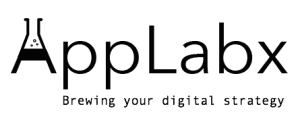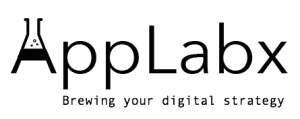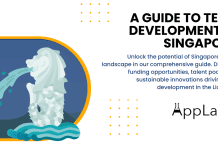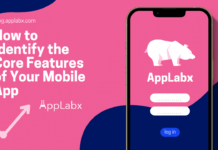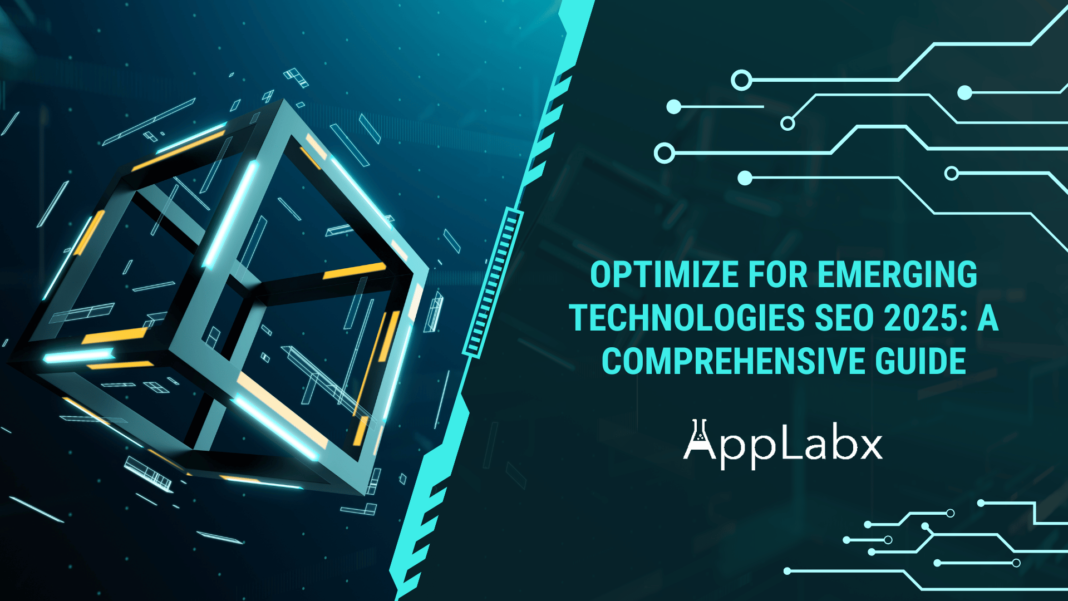Key Takeaways
- Adapt to Emerging Technologies: Leverage advancements like AI, voice search, AR/VR, and IoT to align your SEO strategies with evolving user behaviors and search engine algorithms.
- Prioritize User Experience: Optimize for speed, interactivity, and immersive content while ensuring transparency through blockchain and personalization with AI-powered tools.
- Stay Agile and Data-Driven: Continuously measure performance metrics, update content, and refine strategies to remain competitive in the rapidly evolving SEO landscape of 2025.
The world of Search Engine Optimization (SEO) is a constantly evolving landscape, driven by technological advancements and shifting user behaviors.
As we enter 2025, businesses and marketers are faced with an exciting yet challenging era where emerging technologies are reshaping the way people search for, discover, and interact with content online.
From the rise of artificial intelligence (AI) and machine learning to the widespread adoption of voice search, augmented reality (AR), and blockchain, the SEO game is rapidly transforming.
To stay competitive, it’s essential to not only understand these changes but also adapt and optimize strategies accordingly.

This comprehensive guide aims to be your roadmap for navigating the complexities of emerging technologies in SEO, helping you future-proof your digital presence while unlocking new opportunities for growth.
Why Emerging Technologies Matter in SEO
Emerging technologies are no longer optional for forward-thinking businesses—they are foundational to building a successful digital strategy in 2025.
The integration of technologies such as conversational AI, IoT devices, and immersive AR/VR experiences is changing how users interact with search engines and digital platforms. For example:
- Voice search adoption is skyrocketing: With smart speakers and virtual assistants becoming household staples, users are turning to voice-based queries that demand a more natural, conversational tone in content creation.
- AI-driven personalization is the new norm: Search engines like Google are leveraging advanced AI algorithms like MUM and BERT to deliver hyper-relevant results, requiring websites to provide highly contextual and user-focused content.
- AR and VR are reshaping user expectations: From virtual product demos to immersive tours, businesses that embrace AR/VR stand to capture the attention of tech-savvy audiences.
Ignoring these advancements risks falling behind competitors who are quick to adopt these innovations. Emerging technologies in SEO not only enhance user experience but also improve visibility, engagement, and conversion rates.
The Evolution of SEO: From Keywords to Experiences
In the past, SEO success often revolved around keyword density, backlinks, and meta tags. While these factors remain important, they are no longer the sole determinants of ranking success. Today, SEO is about delivering exceptional user experiences powered by technology. Search engines are evolving to prioritize:
- Context over content volume: AI algorithms now focus on understanding the intent behind queries, emphasizing quality over quantity.
- Multimedia-rich content: Videos, interactive tools, and AR/VR elements are becoming crucial for engaging users and boosting dwell time.
- Technical performance: Core Web Vitals, mobile-first indexing, and secure connections are mandatory for maintaining visibility.
Key Technologies Shaping SEO in 2025
To effectively optimize for the future, you must familiarize yourself with the key technologies driving SEO innovation. These include:
- Artificial Intelligence and Machine Learning: Powering smarter algorithms, personalized recommendations, and content insights.
- Voice Search and Conversational AI: Enabling natural language processing and voice-activated search results.
- Blockchain Technology: Enhancing trust and transparency in link-building and content authenticity.
- AR and VR: Providing immersive experiences that revolutionize e-commerce, education, and entertainment.
- IoT Devices: Introducing context-specific search behaviors that require hyper-localized SEO strategies.
The Goal of This Guide
This guide is designed to help marketers, business owners, and SEO professionals navigate this dynamic terrain. Whether you’re looking to optimize for voice search, embrace AR/VR, or leverage AI-driven insights, you’ll find actionable strategies and real-world examples to guide you. Here’s what you can expect:
- A deep dive into how emerging technologies are changing the SEO landscape.
- Practical tips for adapting your content and technical SEO strategies.
- Tools and resources to measure your success and stay ahead of competitors.
By the end of this guide, you’ll have a clear understanding of how to integrate these transformative technologies into your SEO strategy, ensuring your business remains relevant, visible, and successful in 2025 and beyond.
Are you ready to explore the future of SEO and unlock the potential of emerging technologies? Let’s dive in.
Optimize for Emerging Technologies SEO 2025: A Comprehensive Guide
- Understanding Emerging Technologies in SEO
- Adapting to AI and Machine Learning for SEO
- Optimizing for Voice Search and Conversational AI
- Leveraging AR/VR for SEO in 2025
- Blockchain and SEO Transparency
- Preparing for IoT-Driven Search
- Advanced Technical SEO for Emerging Technologies
- Creating Future-Proof Content
- Measuring and Adjusting Strategies for 2025
1. Understanding Emerging Technologies in SEO
Emerging technologies are redefining the way users interact with search engines, websites, and online content. These advancements are not only influencing user behavior but are also prompting search engines like Google and Bing to adapt their algorithms and ranking factors. To stay competitive, businesses and marketers must understand the role of these technologies in SEO and how to harness their potential. This section delves into what emerging technologies are, why they matter, and the key players shaping the future of SEO.
What Are Emerging Technologies in SEO?
Emerging technologies refer to innovative tools, systems, and methodologies that drive new possibilities for digital marketing and SEO. These technologies:
- Expand the capabilities of search engines: AI-powered algorithms, for instance, can process complex queries more effectively.
- Change how users search and consume information: Voice assistants and IoT devices are promoting more conversational and location-specific searches.
- Open new avenues for user engagement: AR and VR experiences provide immersive ways for users to interact with brands.
Example: AI tools like ChatGPT are being integrated into search engines, enabling dynamic and conversational search experiences.
Key Emerging Technologies Shaping SEO
1. Artificial Intelligence and Machine Learning
AI and machine learning are at the heart of modern SEO advancements.
- Smarter Algorithms
- Google’s BERT and MUM are capable of understanding the context and nuances of queries.
- AI evaluates content quality, relevance, and user satisfaction.
- Example: Websites using AI-generated content with proper human oversight are improving ranking by matching user intent.
- AI-Driven Personalization
- Tailors search results based on user behavior and preferences.
- Helps brands deliver dynamic content suited to individual users.
- Example: E-commerce platforms use machine learning to recommend products based on past searches.
2. Voice Search and Conversational AI
Voice search continues to grow as smart speakers and virtual assistants become integral to everyday life.
- Conversational Queries
- Voice search queries are longer and more conversational.
- Marketers need to target natural language and question-based keywords.
- Example: A user searching via voice might ask, “What’s the best Italian restaurant near me?” instead of typing “Italian restaurant nearby.”
- Devices and Compatibility
- Smart assistants like Siri, Alexa, and Google Assistant demand optimized content that can provide instant, concise answers.
- Strategy: Implement FAQ schema and provide clear, direct answers to common queries.
3. Augmented Reality (AR) and Virtual Reality (VR)
AR and VR are creating immersive experiences that change how users search and interact with content.
- Enhanced User Engagement
- AR allows users to visualize products in real-world settings, such as trying on glasses virtually.
- VR provides complete immersion, such as virtual tours of real estate properties.
- Example: IKEA’s AR app enables users to see how furniture fits into their space, reducing purchase hesitations.
- SEO Implications
- Use AR-friendly assets like 3D models and videos.
- Optimize file sizes to improve page speed and mobile usability.
4. Blockchain Technology
Blockchain is transforming SEO by bringing transparency and trust to digital marketing practices.
- Content Authenticity
- Ensures content ownership through verifiable records, reducing plagiarism.
- Boosts trust among users and search engines alike.
- Link-Building Transparency
- Blockchain can verify the credibility of backlinks, eliminating fraudulent practices.
- Example: A blockchain-powered SEO platform can provide proof of genuine backlinks, improving rankings.
5. Internet of Things (IoT)
IoT devices, such as smart refrigerators and connected cars, are shaping new search behaviors.
- Contextual Search
- IoT-powered searches often rely on location and device-specific contexts.
- Example: A smart fridge suggesting recipes based on available ingredients and prompting grocery orders.
- Hyper-Local Optimization
- Focus on location-based keywords and schema markup to capture IoT-driven searches.
Why Emerging Technologies Are Critical for SEO Success
- Evolving User Expectations:
- Users now expect faster, more personalized, and immersive online experiences.
- Search Engines Are Evolving Too:
- Google and other platforms are leveraging these technologies to refine search algorithms, making them more user-centric.
- Opportunities for Early Adopters:
- Businesses that integrate emerging technologies into their SEO strategy can stay ahead of competitors and dominate SERPs.
How to Start Adapting to Emerging Technologies
- Conduct a Technology Audit
- Identify which technologies are most relevant to your industry and audience.
- Prioritize tools and methods that align with your business goals.
- Stay Informed About Trends
- Regularly monitor updates to Google’s algorithms and new innovations in AI, AR/VR, and IoT.
- Invest in Technical SEO
- Optimize your website for speed, mobile-first indexing, and structured data to stay compatible with new technologies.
Understanding and adapting to emerging technologies is no longer optional. By aligning your SEO strategy with these innovations, you can create a future-proof digital presence that thrives in 2025 and beyond.
2. Adapting to AI and Machine Learning for SEO
Artificial intelligence (AI) and machine learning (ML) have revolutionized the way search engines function, making them smarter and more user-centric. For businesses and marketers, adapting to these technologies is no longer optional—it’s a necessity. AI and ML algorithms influence search engine rankings by analyzing user intent, behavior, and content relevance at a scale humans cannot achieve manually. This section explores how to adapt your SEO strategies to leverage the power of AI and ML effectively.
The Role of AI and Machine Learning in Modern SEO
1. Transforming Search Algorithms
- AI-Powered Algorithms
- Google’s BERT (Bidirectional Encoder Representations from Transformers): Understands the context and nuance of words in search queries.
- Google’s MUM (Multitask Unified Model): Handles complex queries by interpreting information across languages and formats.
- Example: A query like “What should I pack for a hike in Norway in September?” now receives nuanced results considering weather, location, and travel tips.
- Content Quality and Relevance
- AI evaluates content for depth, readability, and user engagement.
- Outdated, keyword-stuffed content gets penalized, while informative and well-structured content ranks higher.
How to Optimize for AI-Powered Algorithms
1. Focus on User Intent
- Understand Searcher Behavior
- Queries are becoming more conversational and intent-focused.
- Categories of intent: informational, navigational, transactional, and local.
- Example: For a query like “best laptops for students,” create content addressing affordability, specifications, and comparisons tailored to students.
- Use Natural Language
- Write content in a conversational tone to match voice and text-based AI-driven searches.
- Tools like Google’s Natural Language API can help analyze and refine content tone.
2. Structured Data and Schema Markup
- Enhance SERP Features
- Add schema markup for FAQs, reviews, events, and products.
- Structured data helps search engines understand and display your content better.
- Example: Rich snippets, like ratings and product prices, improve click-through rates.
- Stay Updated
- Use Google’s Rich Results Test tool to ensure schema compliance and visibility.
AI-Driven Personalization in SEO
1. Dynamic Content Creation
- Personalized Recommendations
- AI tools analyze user preferences to suggest relevant products or content.
- Example: Netflix uses AI to recommend shows, while e-commerce platforms like Amazon suggest products based on browsing history.
- Segmentation and Targeting
- Segment audiences based on behavior and demographics.
- Deliver tailored content to boost engagement and reduce bounce rates.
2. AI-Powered Chatbots and Assistants
- Enhance User Experience
- Integrate chatbots for real-time customer interaction.
- Use AI tools like Dialogflow to create intelligent, conversational bots.
- Example: Sephora’s chatbot assists users with beauty tips and product recommendations, improving customer satisfaction.
- SEO Impact
- Chatbot responses can be optimized with keywords to boost on-site engagement metrics.
Leveraging AI Tools for SEO Optimization
1. Content Optimization Tools
- AI Tools for Content Creation and Analysis
- Use platforms like Surfer SEO, MarketMuse, and Frase to identify high-ranking keywords and content gaps.
- Analyze competitors’ content and generate topic ideas.
- Example: Frase can help you create detailed outlines based on search intent and competitor analysis.
- AI-Enhanced Writing
- Tools like Jasper AI and Writesonic assist in creating drafts faster while maintaining quality.
- Ensure human editing for authenticity and accuracy.
2. Predictive Analytics
- Forecasting Trends
- AI analyzes data patterns to predict user behavior and emerging search trends.
- Example: Google Trends helps businesses identify seasonal keywords for content planning.
- Proactive Optimization
- Adjust strategies ahead of market shifts based on AI insights.
Technical SEO and Machine Learning
1. Core Web Vitals and Page Speed
- AI and Page Performance
- AI-powered tools like Google Lighthouse identify technical issues affecting performance.
- Fix loading times, interactivity issues, and layout shifts to meet Core Web Vitals requirements.
2. Log File Analysis
- AI for Crawl Optimization
- Tools like Botify and DeepCrawl use AI to analyze server logs and identify crawl errors.
- Focus crawlers on high-value pages to improve indexing efficiency.
Challenges in Adapting to AI and ML
1. Balancing Automation with Human Creativity
- Over-reliance on AI can lead to generic or impersonal content.
- Maintain a human touch by injecting unique perspectives and brand voice.
2. Keeping Up with Rapid Changes
- AI technologies evolve rapidly, requiring continuous learning and adaptation.
- Stay updated with industry trends and algorithm updates.
Conclusion: The Future of AI in SEO
AI and machine learning are redefining the rules of SEO, emphasizing user intent, personalization, and content quality. Businesses that adopt AI-driven strategies will benefit from improved search visibility, enhanced user experiences, and better engagement. Start by leveraging AI tools, focusing on structured data, and creating user-centric content to position your brand for success in the era of AI-powered SEO.
Are you ready to make AI and ML your competitive edge? Now is the time to act and future-proof your SEO strategy.
3. Optimizing for Voice Search and Conversational AI
Voice search and conversational AI are revolutionizing how users interact with search engines and digital platforms. As voice-enabled devices like Amazon Alexa, Google Assistant, and Apple Siri become household staples, the way people search is shifting from short, keyword-based queries to longer, conversational phrases. Businesses and marketers need to adapt their SEO strategies to align with this trend. This section explores actionable strategies for optimizing for voice search and conversational AI to improve visibility, engagement, and conversions.
Understanding the Growth of Voice Search and Conversational AI
1. The Rise of Voice-Activated Devices
- Popularity: Smart speakers, smartphones, and IoT devices are increasingly used for voice search.
- Example: By 2025, voice commerce is expected to reach over $40 billion globally, highlighting its growing influence.
- Convenience Factor: Users prefer voice search for hands-free, on-the-go queries.
- Example: Asking Google Assistant, “What’s the weather like today?” while driving.
2. Natural Language Queries
- Conversational Phrases: Voice searches are longer and mimic natural conversation.
- Example: Instead of “best pizza NYC,” users might ask, “Where can I find the best pizza near me right now?”
- Question-Based Queries: Many voice searches start with “who,” “what,” “where,” “when,” “why,” or “how.”
Key Strategies for Optimizing for Voice Search
1. Target Long-Tail Keywords and Natural Language
- Focus on Conversational Phrases: Use keywords that match how people speak rather than how they type.
- Example: Replace “cheap flights” with “Where can I find cheap flights to Europe?”
- Long-Tail Keywords: Target specific, longer phrases that align with voice queries.
2. Implement FAQ Pages
- Answer Common Questions: Create content that addresses user queries directly.
- Example: A coffee shop’s FAQ might include, “What’s the best coffee roast for espresso?”
- Use Natural Language: Structure answers conversationally to align with voice search patterns.
Leveraging Schema Markup for Voice Search
1. Add Structured Data
- Rich Snippets: Schema markup enhances your chances of being featured in voice search results.
- Example: Recipe websites using schema for cooking times and ingredients often appear in Google’s voice search results.
- Featured Snippets Optimization: Provide concise, actionable answers at the top of your content.
2. Use Speakable Schema
- Voice-Ready Content: Add speakable schema markup to highlight parts of your content that can be read aloud by voice assistants.
- Example: News websites can use speakable schema for headlines and summaries.
Creating Conversational Content
1. Optimize for Local Voice Search
- Local Intent: Many voice searches are location-based.
- Example: “Find a pharmacy near me” or “Best Italian restaurant in Chicago.”
- Google My Business Optimization: Ensure your business listing is updated with accurate address, phone number, and operating hours.
2. Provide Direct and Concise Answers
- Position Zero: Craft content that answers questions clearly and succinctly to win the coveted “featured snippet” spot.
- Example: For the query, “How to tie a tie,” create a step-by-step guide with visuals and short descriptions.
3. Use a Conversational Tone
- Write Naturally: Mimic how people speak, especially for blog posts, FAQs, and product descriptions.
- Example: Instead of “Download our app to track fitness goals,” use “Want to track your fitness goals? Download our app today!”
Optimizing Technical SEO for Voice Search
1. Mobile-First Design
- Responsive Design: Ensure your website is optimized for mobile devices, as many voice searches come from smartphones.
- Example: Use fast-loading themes and test for mobile usability using Google’s Mobile-Friendly Test.
2. Improve Page Load Speed
- Quick Answers: Voice assistants prioritize results from fast-loading websites.
- Tools: Use tools like Google PageSpeed Insights and GTmetrix to identify and resolve speed issues.
3. SSL and HTTPS
- Secure Websites: Search engines favor secure sites in rankings, and users trust them more.
- Example: Migrate your website to HTTPS to boost rankings and protect user data.
Enhancing User Experience with Conversational AI
1. AI-Powered Chatbots
- Personalized Assistance: Use chatbots to handle common questions and guide users in real-time.
- Example: A travel website chatbot can suggest destinations based on user preferences.
- Integration with Voice Search: Enable chatbots to respond to voice commands for a seamless experience.
2. Virtual Assistants and Apps
- Conversational Interfaces: Design mobile apps and tools that work with voice commands.
- Example: Banking apps allowing users to check balances or transfer funds via voice.
Tracking and Measuring Voice Search Performance
1. Voice Analytics Tools
- Use platforms like Google Analytics and Search Console to track queries that originate from voice search.
- Identify new keywords and adjust your content strategy.
2. Monitor Featured Snippet Performance
- Regularly check your featured snippets’ ranking and refine content to maintain top positions.
Challenges in Optimizing for Voice Search and Conversational AI
1. Adapting to Rapid Changes
- Voice search technologies evolve quickly, requiring continuous learning and updates.
2. Balancing Conciseness and Depth
- Voice search prioritizes short answers, but your content must still be informative and comprehensive for users seeking detailed insights.
Conclusion: The Future of Voice Search Optimization
Optimizing for voice search and conversational AI is crucial as these technologies continue to transform user behavior. By focusing on conversational keywords, leveraging schema markup, and creating user-centric content, businesses can capture this growing audience segment and maintain a competitive edge. Start now to ensure your website is voice-search-ready and future-proof your SEO strategy.
4. Leveraging AR/VR for SEO in 2025
Augmented reality (AR) and virtual reality (VR) are not just buzzwords; they are transformative technologies that are reshaping how users interact with digital content. By providing immersive experiences, AR and VR offer unique opportunities for businesses to captivate audiences and improve engagement. Incorporating these technologies into your SEO strategy can enhance user experience, increase visibility, and drive higher conversions. In this section, we explore how AR/VR impacts SEO and actionable ways to leverage them effectively in 2025.
The Role of AR/VR in Digital Marketing
1. Enhanced User Engagement
- Immersive Experiences: AR/VR makes content more interactive, holding users’ attention longer.
- Example: IKEA’s AR app allows users to place virtual furniture in their homes before purchasing.
- Increased Dwell Time: Immersive content keeps users engaged on your website, signaling quality to search engines.
2. Personalization and Interaction
- Customized Experiences: AR/VR tailors experiences to individual users, boosting satisfaction and engagement.
- Example: Sephora’s Virtual Artist lets users try makeup virtually, increasing the likelihood of purchase.
SEO Implications of AR/VR
1. Improved On-Site Metrics
- Lower Bounce Rates: Engaging AR/VR content reduces bounce rates by encouraging users to explore more pages.
- Higher Dwell Time: Interactive experiences can significantly increase the time users spend on your website, a positive ranking signal for search engines.
2. Rich Snippets and Visual Search
- Visual Content Optimization: AR/VR assets can enhance search engine visibility when paired with structured data and alt text.
- Example: A 360-degree product view may appear as a rich result in Google Image searches.
3. Local SEO Advantages
- Augmented Local Search: AR enhances local search results by integrating virtual elements with real-world locations.
- Example: Google Lens identifying businesses and offering AR overlays with details like ratings and hours.
Strategies to Leverage AR/VR for SEO
1. Optimize AR/VR Content for Search Engines
- Use Descriptive Metadata
- Add relevant titles, descriptions, and tags to AR/VR assets.
- Include keywords like “360-degree view,” “virtual tour,” or “AR experience.”
- Structured Data
- Implement schema markup to highlight AR/VR content for search engines.
- Example: Use “Product” schema to indicate AR features, such as “View in your space.”
2. Create Immersive Experiences
- Product Visualization
- Develop AR tools to help customers visualize products in real-world settings.
- Example: Nike’s AR app lets users measure their feet for better shoe sizing.
- Virtual Tours
- Offer 360-degree tours for real estate, retail stores, or event venues.
- Example: Real estate websites featuring virtual walkthroughs attract higher engagement.
3. Mobile Optimization
- Responsive Design
- Ensure AR/VR content is mobile-friendly, as most users access these experiences on smartphones.
- Fast Loading Speeds
- Optimize file sizes and use Content Delivery Networks (CDNs) to prevent slow-loading AR/VR assets.
Integrating AR/VR with Social Media and SEO
1. AR Filters and Social Engagement
- Interactive Filters: Use AR filters on platforms like Instagram, Snapchat, and TikTok to drive engagement.
- Example: A restaurant could create a filter showcasing a signature dish in AR.
- SEO Benefits: Increased social media visibility can drive organic traffic to your website.
2. Shareable VR Experiences
- Content Repurposing: Turn VR experiences into shareable videos or interactive posts.
- Example: A travel agency creating a VR tour of Paris that links back to their website.
Technical SEO Considerations for AR/VR
1. Optimize File Formats and Sizes
- Efficient Compression: Use modern file formats like WebAR and GLTF for AR/VR assets.
- Caching and Delivery: Use CDNs to ensure smooth delivery of heavy AR/VR content.
2. Accessibility and Usability
- Alt Text for AR/VR Assets
- Provide descriptive alt text for AR/VR files to improve accessibility and boost rankings.
- User-Friendly Interfaces
- Ensure seamless navigation within AR/VR environments to avoid frustrating users.
3. Mobile-First Indexing
- Test on Mobile Devices: Since Google prioritizes mobile-first indexing, ensure your AR/VR content performs well on smaller screens.
Measuring the Impact of AR/VR on SEO
1. Track User Behavior
- Engagement Metrics: Monitor bounce rates, session duration, and conversion rates for pages featuring AR/VR content.
- Heatmaps and Click Tracking: Tools like Hotjar can reveal how users interact with immersive elements.
2. Analyze Traffic Sources
- Organic Search Performance: Use Google Analytics to track traffic increases from AR/VR-focused keywords.
- Referral Traffic: Monitor visits driven by AR/VR experiences shared on social media or other platforms.
Examples of AR/VR Success Stories
1. L’Oréal’s Virtual Try-On
- The Strategy: L’Oréal used AR to allow customers to test makeup shades virtually.
- Results: Increased user engagement and a higher conversion rate on product pages.
2. Marriott’s VR Postcards
- The Strategy: Marriott created VR experiences showcasing exotic destinations to inspire bookings.
- Results: Improved user interest and significant brand recall.
3. BMW’s AR Car Showroom
- The Strategy: BMW implemented AR to let customers visualize cars in their driveways.
- Results: Boosted test drive requests and online car purchases.
The Future of AR/VR in SEO
AR and VR are set to redefine how users interact with online content, making it more experiential and engaging. Businesses that invest in these technologies now will have a competitive edge in 2025 and beyond. By optimizing AR/VR assets, integrating immersive experiences into marketing strategies, and measuring their impact effectively, you can position your brand for success in this rapidly evolving landscape.
5. Blockchain and SEO Transparency
Blockchain technology is transforming industries by providing unparalleled transparency, security, and decentralization. In the realm of SEO, blockchain offers exciting opportunities to create a more trustworthy and verifiable ecosystem. From verifying backlinks and ensuring content authenticity to enhancing data privacy, blockchain has the potential to address some of the most pressing challenges in digital marketing. This section explores how blockchain can impact SEO and offers actionable strategies for leveraging this technology in 2025.
The Role of Blockchain in SEO
1. Enhancing Transparency
- Immutable Records: Blockchain creates a decentralized ledger that cannot be altered, ensuring data accuracy and transparency.
- Example: Verifying backlink authenticity to prevent black-hat SEO tactics like link farming.
- Auditable Data: All transactions and changes can be tracked, making it easier to verify metrics like clicks, conversions, and ad spend.
2. Combatting Fraud
- Click Fraud Prevention: Blockchain can authenticate clicks in digital advertising campaigns, reducing fraudulent activity.
- Example: A blockchain-powered ad network ensures that every click is from a verified user, improving ROI.
- Content Verification: Blockchain can prove content originality, ensuring credit goes to the rightful creator.
3. Improved Trust in Metrics
- Decentralized Analytics: Blockchain allows marketers to validate traffic sources and engagement metrics without relying solely on third-party platforms.
- Example: Knowing whether traffic is organic or generated by bots becomes more transparent.
Blockchain Applications for SEO in 2025
1. Verifiable Backlinks
- Blockchain for Backlink Authenticity
- Each backlink can be recorded on the blockchain, ensuring its validity and preventing link manipulation.
- Example: Google could use blockchain to verify that backlinks come from reputable sources, penalizing spammy tactics.
- Transparency in Link Building
- Blockchain offers a public ledger to view the origin, context, and relevance of backlinks, reducing gray-hat practices.
2. Content Ownership and Verification
- Authenticating Original Content
- Blockchain timestamps can prove when content was created, preventing plagiarism and duplicate content penalties.
- Example: An article published on Medium can use blockchain to verify its originality, even if scraped by another site.
- NFTs for Content Protection
- Use non-fungible tokens (NFTs) to represent ownership of digital assets like blog posts, images, or videos.
- Example: A graphic designer can mint an NFT for their visuals, ensuring credit when used online.
3. Smart Contracts for SEO Services
- Streamlined Agreements
- Smart contracts ensure that payments to SEO agencies or freelancers are made only when agreed-upon metrics (like traffic or rankings) are met.
- Example: A business could automate payments to an SEO consultant based on hitting specific ranking milestones.
- Fraud Prevention
- Smart contracts reduce disputes by enforcing pre-set conditions, ensuring transparency for both parties.
Blockchain and User Data Privacy
1. Consent-Based Data Collection
- User-Controlled Data
- Blockchain allows users to control how their data is shared with websites and marketers.
- Example: Instead of tracking cookies, users could opt to share specific data in exchange for personalized experiences.
- Compliance with Regulations
- Blockchain simplifies adherence to privacy laws like GDPR and CCPA by creating auditable consent records.
2. Elimination of Data Intermediaries
- Direct Interaction with Users
- Blockchain removes the need for third-party data brokers, providing direct access to verified user information.
- Example: A marketer could access blockchain-stored user preferences to deliver targeted ads without violating privacy.
Blockchain-Driven Analytics for SEO
1. Decentralized Analytics Platforms
- Transparency in Reporting
- Blockchain-based analytics platforms allow marketers to verify the accuracy of metrics without relying solely on third-party tools.
- Example: A blockchain-powered tool could show verifiable organic traffic sources, distinguishing human visits from bots.
- Unbiased Insights
- Eliminate bias from centralized analytics platforms by relying on blockchain-verified data.
2. Real-Time Tracking
- Instant Updates
- Blockchain enables real-time tracking of campaign performance without delays.
- Example: An e-commerce site could see verified sales data immediately after a promotional campaign.
SEO Opportunities in Blockchain-Based Search Engines
1. Decentralized Search Engines
- Emerging Platforms: Blockchain-powered search engines like Presearch reward users for their activity and prioritize transparency.
- Example: Presearch incentivizes users with cryptocurrency for using its search platform, creating a win-win ecosystem.
- Equal Opportunity for Content
- Decentralized engines reduce the bias often present in traditional search algorithms, giving smaller sites a fair chance to rank.
2. Tokenized SEO Incentives
- Rewards for Engagement
- Token-based systems reward users for engaging with content or watching ads.
- Example: A site could offer tokens for time spent on the page, encouraging deeper user engagement.
Challenges in Implementing Blockchain for SEO
1. Scalability Issues
- Processing Power
- Blockchain transactions can be slow and resource-intensive, potentially delaying real-time updates.
- Solutions: Use lightweight blockchain solutions or layer-2 technologies to overcome scalability concerns.
2. High Costs
- Infrastructure Investment
- Setting up blockchain-powered systems requires significant upfront investment.
- Solutions: Collaborate with blockchain platforms offering cost-effective integration for smaller businesses.
Examples of Blockchain Transforming SEO
1. Brave Browser and BAT Tokens
- The Strategy: Brave rewards users with Basic Attention Tokens (BAT) for watching ads while protecting their data.
- Results: Increased trust between users and advertisers, with higher engagement rates.
2. Verasity’s Proof-of-View
- The Strategy: Verasity uses blockchain to verify video views, ensuring advertisers pay only for real engagement.
- Results: Improved ROI for advertisers and trust among users.
3. Steemit for Content Creators
- The Strategy: Blockchain-based blogging platform Steemit rewards users with cryptocurrency for publishing and engaging with content.
- Results: Content creators benefit directly, bypassing traditional ad revenue models.
The Future of Blockchain in SEO Transparency
Blockchain promises to revolutionize SEO by creating a more transparent, secure, and equitable ecosystem. From verifying backlinks to protecting user data, blockchain aligns with the growing demand for authenticity and accountability in digital marketing. By adopting blockchain-driven strategies, businesses can build trust, improve rankings, and stay ahead in the ever-evolving SEO landscape of 2025 and beyond.
6. Preparing for IoT-Driven Search
The Internet of Things (IoT) connects everyday devices like smart speakers, thermostats, wearables, and even cars to the internet, creating a network of interconnected gadgets. By 2025, IoT will redefine how users interact with search engines, shifting from traditional text-based queries to voice commands, real-time prompts, and contextual searches driven by IoT devices. Businesses must adapt their SEO strategies to capitalize on this transformative trend, ensuring their content is discoverable, relevant, and optimized for IoT-driven interactions.
Understanding IoT-Driven Search
1. What is IoT-Driven Search?
- Device Integration: IoT-driven search involves using connected devices to perform searches or retrieve information.
- Example: Asking Alexa for a recipe while cooking or using a smartwatch to find nearby restaurants.
- Contextual Awareness: IoT searches rely on context, such as location, preferences, and device-specific data, to deliver results.
2. How IoT Impacts Search Behavior
- Voice-Centric Queries
- IoT devices often use voice recognition, making searches more conversational.
- Example: A user might say, “What’s the best Italian restaurant near me?” rather than typing “Italian restaurant near me.”
- Action-Oriented Searches
- IoT users search to take immediate action, such as booking a ride or ordering groceries.
SEO Strategies for IoT-Driven Search
1. Voice Search Optimization
- Focus on Conversational Keywords
- Target natural language phrases users might speak into devices.
- Example: Instead of “cheap flights 2025,” use “Where can I find cheap flights in 2025?”
- Answer Questions Directly
- Provide concise answers to common questions.
- Example: A webpage with an FAQ answering, “How do I connect my smart thermostat?” ranks higher for voice queries.
2. Local SEO for IoT Devices
- Claim and Optimize Local Listings
- Ensure your Google My Business profile is accurate and up to date.
- Example: Smart speakers often pull local business information from Google Maps.
- Use Hyperlocal Keywords
- Incorporate specific location-based terms.
- Example: “Best coffee shop in Downtown San Francisco” instead of just “best coffee shop.”
3. Structured Data Implementation
- Leverage Schema Markup
- Add structured data to help IoT devices interpret your content.
- Example: Use “HowTo” schema for step-by-step guides accessed via smart assistants.
- Enhance Product Data
- Include rich product information, such as availability and pricing.
- Example: A smart fridge suggesting recipes based on food items it detects.
Content Optimization for IoT-Driven Search
1. Create IoT-Friendly Content
- Short and Actionable Responses
- Provide clear, concise answers that IoT devices can relay easily.
- Example: A query like “How to tie a tie” should lead to a brief instructional snippet.
- Interactive Content
- Develop AR/VR-compatible content for IoT-enabled devices.
- Example: A furniture retailer offering AR views of products in a customer’s living space.
2. Prioritize Contextual Relevance
- Understand User Intent
- Align your content with the specific needs and environments of IoT users.
- Example: Smart cars may prioritize gas station searches over general automotive queries.
- Dynamic Content Delivery
- Use AI to adapt content based on device type and user preferences.
Technical SEO for IoT Integration
1. Ensure Fast Loading Speeds
- Lightweight Pages
- Optimize for quick loading on IoT devices with limited processing power.
- Example: Compress images and minify CSS for smartwatches or voice assistants.
- Use CDNs
- Deliver content faster across geographically distributed devices.
2. Mobile and Multidevice Optimization
- Responsive Design
- Make your website accessible across various IoT devices, from smart TVs to wearables.
- Test on Multiple Platforms
- Ensure seamless functionality on devices like Amazon Echo, Google Nest, and Apple Watch.
3. Optimize for IoT Search Algorithms
- Understand IoT Ecosystem Search Providers
- Each IoT platform uses unique search systems.
- Example: Optimize for Alexa’s Bing-based results and Google Nest’s Google-powered responses.
Leveraging IoT Data for SEO Insights
1. Analyze Device-Specific Search Patterns
- Collect IoT Data
- Use analytics tools to track IoT-driven traffic and behavior.
- Example: Identify peak usage times for smart speaker searches.
- Adapt to Trends
- Use IoT insights to tailor content updates.
2. Focus on User Behavior Analytics
- Monitor Contextual Queries
- Analyze how and when users interact with your content via IoT devices.
- Example: Understanding voice searches during commutes for actionable updates.
Challenges in IoT-Driven SEO
1. Fragmentation of IoT Ecosystem
- Variety of Devices
- Multiple IoT platforms (e.g., Alexa, Google Nest) require platform-specific optimizations.
- Solution: Develop a universal SEO strategy while tailoring critical aspects for each ecosystem.
2. Security and Privacy Concerns
- User Data Sensitivity
- IoT devices collect personal data, raising privacy challenges.
- Solution: Comply with regulations like GDPR and ensure transparent data practices.
3. Limited Screen or Interface
- Minimalist Results Display
- IoT devices like smart speakers lack visual interfaces, limiting content presentation.
- Solution: Focus on delivering concise, voice-friendly content.
Examples of IoT-Driven Search Success
1. Domino’s Pizza Tracker
- The Strategy: Domino’s allows users to order and track pizzas via smart speakers like Alexa.
- Results: Enhanced customer convenience and increased orders.
2. Nest Thermostat and Google Search
- The Strategy: Google Nest users receive energy-saving tips via connected search queries.
- Results: Improved engagement with eco-conscious consumers.
3. Amazon Alexa and Smart Home Integration
- The Strategy: Alexa optimizes search results for smart home commands like “Turn on living room lights.”
- Results: Greater adoption of Amazon IoT products and services.
The Future of IoT-Driven SEO
IoT is revolutionizing how users search, demanding businesses to rethink their SEO strategies. From voice search and structured data to device-specific optimization, preparing for IoT-driven search ensures that your content is accessible, relevant, and competitive in the connected world of 2025. By embracing these innovations, businesses can stay ahead of the curve and meet the evolving needs of IoT users.
7. Advanced Technical SEO for Emerging Technologies
As technology evolves, technical SEO must adapt to support advancements like AI, machine learning, IoT, AR/VR, and blockchain. Advanced technical SEO in 2025 focuses on optimizing websites for speed, scalability, accessibility, and seamless user experiences across diverse platforms and devices. This section explores cutting-edge techniques for achieving technical excellence, ensuring websites remain discoverable and competitive in the age of emerging technologies.
Understanding Advanced Technical SEO
1. What Is Advanced Technical SEO?
- Definition: Advanced technical SEO involves optimizing a website’s infrastructure to enhance its visibility, performance, and user experience for search engines and users.
- Scope: Goes beyond basic optimization (e.g., meta tags) to include strategies for emerging tech like schema markup, server-side rendering, and more.
2. Why Advanced Technical SEO Matters in 2025
- Adaptation to New Search Behaviors: Technologies like voice search, AR/VR, and IoT demand specialized optimization strategies.
- Example: Ensuring content is voice-search friendly and accessible on devices like smart speakers or VR headsets.
Core Pillars of Advanced Technical SEO
1. Performance Optimization
- Page Speed and Core Web Vitals
- Optimize loading times, interactivity, and visual stability.
- Example: Use lazy loading for images and prioritize fast server response times to meet Google’s Core Web Vitals benchmarks.
- Content Delivery Networks (CDNs)
- Distribute content globally to reduce latency.
- Example: Employ a CDN like Cloudflare to ensure fast load times across all regions.
2. Mobile-First and Multidevice Optimization
- Responsive Design
- Ensure content adjusts seamlessly across various devices, including AR/VR headsets and wearables.
- Example: A tourism site offering 360-degree AR tours should adapt visuals for both mobile screens and VR glasses.
- Mobile-Friendly Testing
- Continuously test mobile versions for usability and speed using tools like Google’s Mobile-Friendly Test.
3. Structured Data and Schema Markup
- Leverage Rich Results
- Implement schema types like FAQ, HowTo, and Product to enhance visibility in SERPs.
- Example: A smart home retailer using schema for product reviews and specifications to improve IoT device compatibility.
- AR/VR-Specific Schema
- Use emerging schemas like AR-enabled object details for immersive product pages.
Optimizing for AI-Driven Search Engines
1. Semantic Search and Contextual Understanding
- Optimize for Entity-Based Search
- Focus on topics rather than keywords to align with AI’s ability to understand semantic relationships.
- Example: Create topic clusters like “Smart Home Technology” with interconnected subtopics for better ranking.
- Natural Language Processing (NLP)
- Write content in conversational tones to match AI-driven SERP results.
- Example: Answer questions like “How does a blockchain-based smart contract work?” clearly and succinctly.
2. AI-Friendly Crawling and Indexing
- Dynamic Rendering
- Serve pre-rendered content to bots unable to execute JavaScript.
- Example: Use tools like Puppeteer for rendering SPAs (single-page applications).
- Crawl Budget Optimization
- Ensure important pages are prioritized for crawling.
- Example: Use robots.txt and sitemap.xml to guide search engines effectively.
Adapting to IoT and Wearable Devices
1. Optimize for IoT Devices
- Device-Specific Keywords
- Use terms users might speak into IoT devices.
- Example: “Find a gym nearby” for a smartwatch query versus “best gyms in [city]” for mobile.
- Lightweight Content
- Design content to load on low-power devices, such as IoT-enabled refrigerators or smartwatches.
2. Prioritize Contextual Relevance
- Real-Time Data Integration
- Optimize for time-sensitive searches.
- Example: A weather app syncing with IoT devices to provide hyperlocal forecasts instantly.
Enhanced Security and Data Privacy for SEO
1. HTTPS and Secure Protocols
- Mandatory HTTPS
- Ensure all pages use HTTPS to secure data transmission.
- Example: Google gives a ranking boost to HTTPS-secured sites.
- SSL/TLS for APIs
- Protect APIs used by IoT and AR/VR platforms with secure protocols.
2. User Data Protection
- Compliance with Privacy Regulations
- Adhere to GDPR, CCPA, and other global privacy laws.
- Example: Use blockchain to give users control over their data sharing preferences.
Optimizing for AR/VR Platforms
1. AR/VR-Specific Content
- Interactive Visuals
- Use high-quality 3D visuals optimized for AR/VR environments.
- Example: An e-commerce site featuring AR-enabled try-on tools for clothing or accessories.
- Searchable AR/VR Content
- Make AR/VR files discoverable by adding metadata and structured data.
2. Cross-Device Compatibility
- Test Across Platforms
- Ensure AR/VR content works on multiple devices, from smartphones to dedicated headsets.
- Use Standardized Formats
- Adopt widely supported formats like WebXR for AR/VR content.
Leveraging Blockchain for Technical SEO
1. Verifiable Backlink Authenticity
- Blockchain-Powered Backlinks
- Use blockchain to validate backlink origins.
- Example: Ensure backlinks come from high-authority domains with blockchain verification.
2. Decentralized Analytics
- Transparent Reporting
- Implement blockchain-based analytics tools for unbiased performance metrics.
- Example: Verify organic traffic data through decentralized platforms like Brave.
Real-Time SEO and Predictive Analytics
1. Real-Time Adjustments
- AI-Powered Tools
- Use AI to monitor and adapt SEO strategies in real time.
- Example: Google Analytics 4’s predictive insights can forecast trends and recommend optimizations.
- Dynamic Content Updates
- Tailor content based on real-time user behavior and preferences.
2. Predictive SEO Analytics
- Forecast User Intent
- Use machine learning to predict future search trends.
- Example: Anticipate seasonal queries like “Best VR gifts for Christmas 2025.”
Case Studies: Advanced Technical SEO in Action
1. Amazon’s Dynamic Rendering for SPAs
- The Strategy: Pre-rendered pages for better crawling of its JavaScript-heavy site.
- Results: Improved indexation and higher search rankings.
2. IKEA’s AR-Powered Shopping
- The Strategy: Optimized AR content for product visualization in user environments.
- Results: Increased engagement and sales.
3. Blockchain-Based Analytics by Brave
- The Strategy: Transparent and decentralized metrics for traffic verification.
- Results: Enhanced trust among advertisers and better ROI tracking.
The Future of Advanced Technical SEO in 2025
In 2025, advanced technical SEO will be the backbone of successful digital marketing strategies, ensuring websites are optimized for speed, security, and emerging technologies. By implementing these strategies, businesses can future-proof their online presence, cater to evolving user behaviors, and stay ahead in an increasingly competitive landscape.
8. Creating Future-Proof Content
As digital landscapes evolve, content strategies must adapt to remain effective. Future-proof content anticipates trends, adapts to emerging technologies, and remains relevant for years to come. This guide delves into creating content optimized for user expectations, search engine algorithms, and the ever-changing digital ecosystem in 2025.
Understanding Future-Proof Content
1. What Is Future-Proof Content?
- Definition: Content designed to stay relevant and useful over time, regardless of technological or algorithmic changes.
- Key Characteristics:
- Timelessness: Focuses on topics with long-term relevance.
- Scalability: Easily updated as trends and technologies evolve.
2. Why Future-Proof Content Matters in 2025
- Avoiding Content Decay: Ensures content remains valuable and ranks well in search engines.
- Example: A blog on “How to Save for Retirement” is more evergreen than “Best Stocks to Buy in 2025.”
- Aligning with Emerging Technologies: Ensures compatibility with voice search, AR/VR platforms, and IoT devices.
Core Principles of Future-Proof Content
1. Focus on Evergreen Topics
- What Are Evergreen Topics?
- Subjects that maintain relevance over time.
- Example: “Benefits of Exercise” versus “Fitness Trends of 2025.”
- Benefits of Evergreen Content
- Consistent traffic over time.
- Easier to update with minimal effort.
2. Adaptability to Emerging Technologies
- Content for IoT and Voice Search
- Optimize for conversational keywords and questions.
- Example: FAQs like “What is the ideal temperature for a smart thermostat?” for IoT users.
- AR/VR Compatibility
- Incorporate interactive and visual elements.
- Example: A real estate site offering AR walkthroughs of properties.
Content Creation Strategies for 2025
1. Conduct Comprehensive Topic Research
- Use AI Tools
- Leverage tools like ChatGPT or Jasper to identify trending and long-tail keywords.
- Example: Use AI to find related queries for “blockchain applications in healthcare.”
- Analyze Competitor Content
- Identify gaps in competitor strategies to create unique, value-driven content.
2. Emphasize Quality Over Quantity
- In-Depth Articles
- Focus on long-form content with comprehensive insights.
- Example: A 3,000-word guide on “Sustainable Living” covering actionable tips, stats, and case studies.
- Fact-Driven Content
- Back claims with credible sources and data.
3. Incorporate Multimedia Elements
- Interactive Visuals
- Use AR/VR tools for engaging experiences.
- Example: A clothing retailer offering virtual try-on tools embedded in product pages.
- Video and Audio Content
- Include tutorials, podcasts, or explainer videos to complement written content.
Optimizing Content for Search Engines in 2025
1. Focus on Semantic SEO
- Entity-Based Optimization
- Use topic clusters and semantic keywords.
- Example: A healthcare blog linking “healthy eating” to “mental well-being.”
- Answering User Intent
- Write content tailored to specific user queries.
- Example: Directly address questions like “How does solar energy work?”
2. Enhance Content Accessibility
- Mobile-First Content
- Ensure layouts are optimized for mobile and wearable devices.
- Example: Short paragraphs and scannable content for smartwatch users.
- Voice-Friendly Structure
- Write in a conversational tone for voice search compatibility.
Integrating Emerging Technologies into Content
1. AI-Powered Content Personalization
- Dynamic Content
- Deliver personalized experiences using AI.
- Example: A fitness app showing diet tips based on a user’s activity data.
- Predictive Content Recommendations
- Suggest articles or products based on user behavior.
2. Leveraging Blockchain for Content Authenticity
- Transparent Authorship
- Use blockchain to verify content creators.
- Example: Articles with blockchain-backed author credentials to build trust.
- Decentralized Content Distribution
- Publish content across decentralized platforms for broader reach.
Updating and Repurposing Content
1. Regular Updates for Evergreen Content
- Monitor Performance
- Use analytics to identify declining traffic and update accordingly.
- Example: Refresh a 2023 guide on “SEO Best Practices” with 2025 trends.
- Add New Insights
- Include recent data, examples, or technologies.
2. Repurpose for Multiple Channels
- Transform Articles into Videos
- Convert written guides into engaging video tutorials.
- Example: A blog on “Digital Marketing Tips” repurposed as a YouTube series.
- Create Social Media Snippets
- Share key takeaways on platforms like Instagram or LinkedIn.
Examples of Future-Proof Content
1. HubSpot’s Marketing Guides
- The Strategy: Comprehensive, evergreen guides regularly updated with new strategies and data.
- Results: Consistently high rankings and long-term traffic.
2. National Geographic’s Interactive Articles
- The Strategy: Multimedia-rich content leveraging AR/VR for immersive storytelling.
- Results: High engagement and shares across platforms.
3. Duolingo’s Personalized Content
- The Strategy: AI-driven lessons tailored to user progress and preferences.
- Results: Increased user retention and course completions.
Challenges in Creating Future-Proof Content
1. Keeping Up with Technology
- Rapid Tech Changes
- Emerging platforms and formats can render current content outdated.
- Solution: Stay informed and adapt quickly to new trends.
2. Balancing Scalability and Depth
- Maintaining Quality
- Balancing evergreen relevance with detailed insights can be challenging.
- Solution: Prioritize thorough research and iterative updates.
The Future of Future-Proof Content
Creating future-proof content in 2025 requires foresight, adaptability, and a focus on quality. By integrating evergreen topics, emerging technologies, and SEO best practices, businesses can build a content library that drives consistent traffic and engagement over time. Embracing these strategies ensures content remains a valuable asset, ready to meet the demands of tomorrow’s digital audience.
9. Measuring and Adjusting Strategies for 2025
The dynamic nature of SEO and digital marketing demands constant evaluation and adaptation of strategies. As search engine algorithms evolve and emerging technologies reshape user behavior, businesses must measure their performance and fine-tune their strategies to remain competitive. This section explores how to effectively measure, analyze, and adjust your SEO strategies for 2025 using cutting-edge tools and techniques.
Importance of Measuring and Adjusting Strategies
1. Why Measurement Matters
- Identifying Strengths and Weaknesses
- Pinpoints areas where strategies excel or underperform.
- Example: Analyzing organic traffic to discover which blog posts drive the most conversions.
- Adapting to Algorithm Updates
- Ensures compliance with new SEO guidelines, avoiding penalties.
- Example: Reacting to Google’s algorithm updates focused on AI-driven search.
2. Continuous Improvement
- Staying Ahead of Competitors
- Regular adjustments ensure your site remains optimized.
- Example: Updating content to target trending keywords before competitors.
- Enhancing ROI
- Fine-tuning strategies minimizes wasted resources.
Key Metrics to Track in 2025
1. Organic Traffic
- Why It Matters: Measures your site’s visibility and user engagement.
- Tools to Use: Google Analytics, Semrush, Ahrefs.
- Example: Monitoring a steady increase in traffic after optimizing for voice search.
2. Keyword Rankings
- Why It Matters: Indicates your position in search engine results pages (SERPs).
- Actionable Insights:
- Identify keywords that drop in rank and optimize accordingly.
- Example: A drop in ranking for “best smart home devices” signals a need for updated content.
3. Core Web Vitals
- Why It Matters: Reflects user experience through page load speed, interactivity, and visual stability.
- Tools to Use: Google PageSpeed Insights, Lighthouse.
- Example: Improving loading times for mobile users to boost your Largest Contentful Paint (LCP) score.
4. Conversion Rates
- Why It Matters: Tracks how effectively your site turns visitors into customers or leads.
- Actionable Insights:
- Use A/B testing to refine call-to-action (CTA) placements.
- Example: A higher conversion rate after repositioning a CTA button.
5. Bounce Rate and Dwell Time
- Why It Matters: Indicates user engagement and content relevance.
- Tools to Use: Hotjar, Crazy Egg.
- Example: Reducing bounce rates by adding internal links and engaging visuals.
Tools and Techniques for Effective Measurement
1. Advanced Analytics Platforms
- Google Analytics 4 (GA4)
- Tracks cross-platform user behavior for a holistic view.
- Example: Analyzing user journeys across web and mobile.
- SEO-Specific Tools
- Ahrefs, Semrush, and Moz provide in-depth insights into backlinks, keywords, and competitor performance.
2. Heatmaps and User Behavior Tracking
- Tools to Use: Hotjar, Crazy Egg.
- Benefits:
- Identify areas of high engagement or friction on your website.
- Example: Adjusting a poorly performing landing page after observing user behavior.
3. AI-Powered Insights
- Predictive Analytics
- Tools like BrightEdge predict search trends and suggest optimizations.
- Example: Forecasting an increase in searches for “eco-friendly travel gear” based on historical data.
4. Competitive Analysis
- Tools to Use: SpyFu, SimilarWeb.
- Actionable Insights:
- Compare your performance with competitors to identify gaps.
- Example: Discovering that a competitor ranks higher for “smart home security” and adjusting your strategy accordingly.
Adjusting Strategies for 2025
1. Content Optimization
- Regular Updates
- Refresh outdated content to maintain relevance.
- Example: Updating a 2023 blog post on “AI in Marketing” with 2025 advancements.
- Expand Topic Coverage
- Address emerging subtopics within your niche.
- Example: Adding sections on blockchain applications to an existing fintech article.
2. Technical SEO Adjustments
- Monitor Core Web Vitals
- Continuously improve page speed, interactivity, and stability.
- Example: Switching to a faster hosting provider to improve page load times.
- Fix Crawl Errors
- Use Google Search Console to identify and resolve issues.
3. Focus on Emerging Technologies
- Voice Search Optimization
- Adjust content to answer natural language queries.
- Example: Adding questions like “What’s the best smart thermostat for 2025?” to your FAQ section.
- AR/VR Integration
- Create immersive content experiences.
- Example: A furniture retailer adding AR tools for visualizing products in users’ homes.
Examples of Measured Adjustments in Action
1. Airbnb’s Mobile Optimization
- Challenge: High bounce rates on mobile devices.
- Solution: Enhanced mobile-friendly design and faster loading times.
- Result: Increased mobile bookings by 30%.
2. Nike’s Predictive Content Strategy
- Challenge: Anticipating user interest in new fitness trends.
- Solution: Used AI tools to predict popular topics and launched targeted campaigns.
- Result: Higher engagement and sales during trend peaks.
3. HubSpot’s Evergreen Content Updates
- Challenge: Declining traffic to older blog posts.
- Solution: Regularly updated content with new data and examples.
- Result: Consistent growth in organic traffic.
Challenges in Measuring and Adjusting Strategies
1. Data Overload
- Problem: Too much data can make it hard to identify actionable insights.
- Solution: Focus on key metrics aligned with business goals.
2. Rapid Algorithm Changes
- Problem: Frequent updates can disrupt strategies.
- Solution: Stay informed through trusted SEO sources and quickly adapt.
3. Integration Across Platforms
- Problem: Ensuring consistent measurement across multiple channels.
- Solution: Use unified analytics platforms like GA4.
The Future of Strategy Adjustment
Measuring and adjusting strategies in 2025 is not just about reacting to changes but anticipating them. By leveraging advanced tools, focusing on key metrics, and integrating cutting-edge technologies, businesses can ensure their SEO strategies remain effective and future-proof. Continuous improvement will be the cornerstone of success in an ever-evolving digital landscape.
Conclusion
As we venture further into the rapidly evolving digital landscape, the importance of adapting to emerging technologies in SEO cannot be overstated. The year 2025 marks a transformative era, where advancements in AI, machine learning, blockchain, AR/VR, voice search, IoT, and other groundbreaking innovations redefine how businesses connect with audiences. This comprehensive guide has delved into strategies that equip you to not only navigate these changes but thrive in this dynamic ecosystem.
By understanding the fundamentals of emerging technologies and their impact on SEO, businesses can create forward-thinking strategies that align with evolving user behaviors and search engine algorithms. Here’s a final overview of the key takeaways to guide your SEO success in 2025:
Key Insights to Drive Your SEO Strategy in 2025
1. Leverage AI and Machine Learning
- AI will continue to power search engines like Google, refining how queries are interpreted and results are delivered.
- Adopting AI-driven tools for content creation, personalization, and data analysis ensures a competitive edge.
2. Optimize for Voice Search and Conversational AI
- The rise of voice assistants means optimizing for natural language queries is no longer optional.
- Structured data, FAQs, and conversational tone will play pivotal roles in securing voice search visibility.
3. Explore AR/VR for Interactive Experiences
- AR/VR technologies are revolutionizing industries from retail to real estate, creating immersive user experiences.
- Incorporating AR/VR elements into your SEO strategy can enhance engagement and drive conversions.
4. Embrace Blockchain for SEO Transparency
- Blockchain’s potential for verifying content authenticity and securing data privacy can build user trust.
- Leveraging decentralized platforms may reshape content distribution and search engine dynamics.
5. Prepare for IoT-Driven Search
- IoT devices will expand how users search, making localized and conversational content crucial.
- Optimizing for smart devices ensures your brand remains accessible across diverse platforms.
6. Advanced Technical SEO
- The foundations of SEO, such as core web vitals, mobile optimization, and structured data, remain critical.
- Coupled with the integration of emerging technologies, these technical aspects will enhance search engine visibility.
7. Create Future-Proof Content
- Focus on evergreen, high-quality content that adapts to changing trends and user needs.
- Regular updates and the use of multimedia will ensure sustained relevance and engagement.
8. Measure and Adjust Strategies Continuously
- The cornerstone of SEO success lies in data-driven decision-making.
- Regularly track key metrics, adapt to trends, and refine your strategies to stay ahead of the curve.
Why Now Is the Time to Act
Emerging technologies are not a distant future—they’re here now, shaping how users interact with content and brands. Businesses that embrace these innovations early will have the competitive advantage of capturing market share and establishing authority in their niches. By integrating these technologies thoughtfully, you create a seamless user experience that meets modern expectations while preparing for future advancements.
For instance:
- Brands like IKEA using AR to let customers visualize furniture in their homes show the power of staying ahead.
- Voice-optimized businesses capturing leads through conversational AI demonstrate the growing shift in user behavior.
The lesson is clear: adaptability is no longer an option—it’s a necessity.
The Road Ahead: Preparing for SEO in the Next Decade
As you implement these strategies, remember that SEO is not a one-time effort but a continuous journey. The interplay between human creativity and technological innovation will define success in the years to come. Staying informed, investing in the right tools, and fostering a mindset of agility will ensure your SEO strategy evolves with emerging technologies.
- Stay Informed: Regularly update your knowledge of SEO trends and technological advancements.
- Invest in Tools: AI, analytics, and automation tools will be essential for efficiency and insights.
- Foster Agility: Be prepared to experiment, fail, and adapt quickly to new challenges and opportunities.
Final Thoughts
2025 offers unparalleled opportunities for businesses willing to embrace the challenges and possibilities of emerging technologies. By focusing on user intent, optimizing for technological innovations, and maintaining a commitment to quality and transparency, your SEO efforts will not only succeed but set new standards in the industry.
The digital world waits for no one. By taking proactive steps today, you’re not just optimizing for SEO—you’re future-proofing your business for sustained growth and relevance in an ever-evolving market.
Start implementing these strategies now, and watch your business thrive in the exciting landscape of 2025 and beyond.
If you are looking for a top-class digital marketer, then book a free consultation slot here.
If you find this article useful, why not share it with your friends and business partners, and also leave a nice comment below?
We, at the AppLabx Research Team, strive to bring the latest and most meaningful data, guides, and statistics to your doorstep.
To get access to top-quality guides, click over to the AppLabx Blog.
People also ask
What are emerging technologies in SEO?
Emerging technologies in SEO include AI, machine learning, voice search, AR/VR, IoT, and blockchain, all of which reshape how search engines and users interact with content.
Why is AI important for SEO in 2025?
AI enables better content personalization, predictive analytics, and natural language processing, helping optimize for search engines and enhance user experiences.
How does voice search affect SEO?
Voice search requires optimization for conversational keywords and natural language queries, ensuring your content appears in voice assistant responses.
What is AR/VR SEO, and how does it work?
AR/VR SEO involves optimizing immersive experiences like virtual showrooms or AR tools to engage users and improve search engine visibility.
How can blockchain improve SEO transparency?
Blockchain can verify content authenticity, secure user data, and improve trust, contributing to better brand credibility and user engagement.
What role does IoT play in SEO?
IoT impacts search through smart devices that enable contextual and localized search, requiring content optimization for these platforms.
How can I optimize for conversational AI?
Focus on natural language, answer-based content, and structured data to match conversational AI’s interpretation of user intent.
What are core web vitals, and why are they important?
Core web vitals measure page performance metrics like load time, interactivity, and visual stability, crucial for ranking in search engines.
How do I future-proof my content for SEO?
Create evergreen, high-quality content, regularly update it with new information, and adapt it to emerging trends and user needs.
What are the best tools for tracking SEO metrics in 2025?
Use tools like Google Analytics 4, Semrush, Ahrefs, and predictive AI platforms to track and optimize SEO performance.
How do AR and VR improve user engagement?
AR and VR create immersive experiences, such as virtual product try-ons or tours, increasing user interaction and retention rates.
What is the impact of blockchain on content distribution?
Blockchain decentralizes content distribution, offering better control and transparency, which can improve user trust and engagement.
How can I optimize for IoT-driven search?
Focus on localized and conversational keywords, ensure fast-loading pages, and optimize for voice-based search queries.
What is predictive analytics in SEO?
Predictive analytics uses AI to analyze data trends and forecast search behavior, helping optimize strategies for future relevance.
How do structured data and schema impact SEO?
Structured data helps search engines understand your content better, improving rich snippets and overall visibility in SERPs.
Why is mobile optimization crucial in 2025?
With most searches happening on mobile devices, ensuring mobile-friendly design and performance is essential for user experience and rankings.
How do I optimize for natural language queries?
Use conversational tone, include long-tail keywords, and answer specific questions directly to match user intent.
What industries benefit most from AR/VR SEO?
Industries like retail, real estate, education, and healthcare can benefit from AR/VR by creating interactive and engaging user experiences.
How does voice search differ from text search?
Voice search queries are longer, conversational, and question-based, requiring content to answer specific intents concisely.
What are the challenges of blockchain in SEO?
Blockchain adoption requires technical expertise, increased cost, and a lack of widespread integration with current SEO practices.
What are the top SEO trends for 2025?
Key trends include voice search optimization, AI-driven insights, AR/VR integration, blockchain transparency, and IoT-driven search.
How can machine learning improve keyword research?
Machine learning tools analyze vast amounts of data to uncover high-potential keywords, improving targeting and content relevancy.
What is conversational AI, and why is it important?
Conversational AI refers to systems like chatbots and voice assistants that interact with users naturally, influencing how content is consumed and searched.
How does IoT change local SEO strategies?
IoT emphasizes hyper-local searches and device-specific optimization, requiring businesses to refine localized keywords and content.
Why is personalization essential for SEO?
Personalization improves user experience by tailoring content to individual preferences, increasing engagement and conversions.
What metrics are most important for SEO in 2025?
Focus on core web vitals, organic traffic, conversion rates, bounce rates, and keyword rankings for comprehensive performance tracking.
How can businesses prepare for SEO in 2025?
Stay updated on trends, invest in AI and analytics tools, focus on user intent, and create adaptive, high-quality content.
What are examples of successful AR/VR SEO campaigns?
IKEA’s AR app for visualizing furniture or real estate virtual tours are examples of effective AR/VR strategies driving engagement.
How can I integrate emerging technologies into my SEO strategy?
Analyze your audience’s needs, leverage tools like AI and blockchain, and create content optimized for voice, AR/VR, and IoT devices.
What is the future of SEO beyond 2025?
The future will likely focus on deeper AI integration, immersive experiences, decentralized platforms, and evolving search behaviors driven by new tech.
